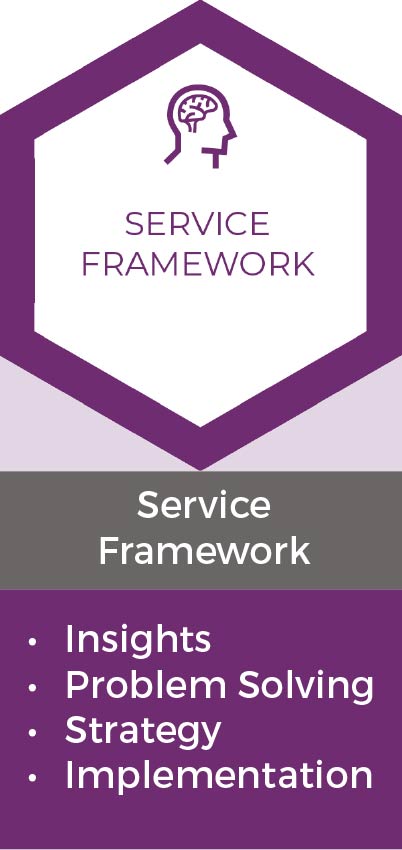AGN Global Business Voice: Practice Management
Accountants ‘move to advisory’, or their transition from pure compliance services to a more advisory centred approach, is a phenomenon driven by the deployment of the latest technologies and changing client expectations. The technologies deliver production efficiencies – freeing up a professional’s time. The technology can accumulate large amounts of client data and thus analytics allow greater insights into the client’s financial health and performance.

Introduction
Accountants ‘move to advisory’, or their transition from pure compliance services to a more advisory centred approach, is a phenomenon driven by the deployment of the latest technologies and changing client expectations. The technologies deliver production efficiencies – freeing up a professional’s time. The technology can accumulate large amounts of client data and thus analytics allow greater insights into the client’s financial health and performance.
Some firms see this as an opportunity to specialise in regulated assurance and tax compliance services and leverage technology to that effect. There are others where the technology opens up the opportunity to transition to a more value-led consultancy and advisory proposition, and also plenty where a mix of the two is seen as desirable.
There is no right or wrong approach, but as compliance processes become increasingly automated, there is opportunity for the consultancy aspect of client service to become a greater part of the value billed to the client. It’s exactly with this in mind that AGN International has developed the Advisory Migration Methodology (AMM) and accompanying Advisory Migration Diagnostic tool
(AMD).
The AMM and AMD are not a ‘solution’ in themselves – they are tools to help a firm’s management reflect on their particular status quo and may reveal unforeseen gaps and opportunities.
- The AGN Advisory Migration Methodology is comprised of four ‘regions’ critical to establishing and delivering professional advisory services. These break down into a range of practical, soft and technical skills, knowledge, data, processes and deliverables. AMM has been developed through research, with reference to a range of published models, AGN member workshops and beta tested in conjunction with an international group of 21 members ‘Next-Gen’ qualified staff.
- The complementary Advisory Migration Diagnostic tool presents a firm’s management with a series of challenging statements about the firm’s current status in each area – to which you agree/disagree, thus helping identify a firm’s strengths and weaknesses, highlighting gaps and development areas. (The AMD requires total honesty to be of greatest value).
- Having introduced the AMM and AMD tools, we touch on the area of change management to support the implementation of actions within member firms.

The Advisory Migration
Methodology (AMM)

The four pentagons represent the four critical regions of knowledge, skills and professional practice that firms need to address as they journey from compliance towards a professional business advisory practice. It’s important to note that while we talk about a journey, the four regions are not intended to represent a strict chronological order. Competencies and attributes can be developed within the regions at different times and at different speeds.
Let’s look at the AMM in more detail.
DATA & SKILLS INPUTS
Do we have the ability to capture the data, analyse it, and the underlying skills to use and commercialise the analysis?
Data – Technology Driven
Where does your firm stand on the path to both practice digitisation and the longer-term destination of total digital transformation? The region challenges firms to think in terms of the extent that they have genuinely absorbed the technologies that enable sophisticated data harvesting and analysis.
Foundational Skills – Technical & Personal
Along with the software and changed processes comes the need for different skill sets amongst professional staff. This includes the fabled ‘Information Technology Accountant’, equipped with deep understanding of the range of available software. But there are two other skill sets required; firstly, all the soft skills requisite in a client interface role and also a commercial view of the world that results in the ability to ask the right penetrating questions about how your client makes money. A knowledge of and ability to apply consulting tools and techniques.
SERVICE FRAMEWORK
Have we understood the client’s perception of the matters at hand, how they will perceive value and how they want to “consume“ our services?
Insights
Using our systems and analysis to provide valuable information to the client, based on their own and other data, that they do not already know. Critically these insights need to be acutely tuned and in the context of deep industry and sector trends and information.
Problem-Solving
The client knows what the problem is, but recognises that they need help coming up with a solution. Our challenge now is to propose cunning and valuable solutions and answers – and to do so with courage, empathy and great interpersonal skill.
Strategy
The issue is not a specific business need or problem, but something higher level and directional. The client recognises that they need help to look at the overall plan and strategy, be it business or fiscal. Can we use the professional consulting models, tools and theories to help bring clarity? How do we do this and all the while keep the client on side making them feel in control of this discovery process?
Implementation
The issue has been identified and understood, direction is clear, and now it’s all about getting it done. The client needs not only to manage the process of change, but also to procure the correct skills and resources to deliver on the ground. Will we roll up our sleeves to implement or project manage? Or will we be the cool external voice of reason delivering the harsh but fair review, reporting on issues and progress?
STAKEHOLDER & BUSINESS ENVIRONMENT
Have we understood who the stakeholders are, what motivates them, the environment they are operating in and how decisions will get made? An intimate understanding of the factors below will influence how any given project is managed and the solution models that may be applied.
Stakeholder Motivations
Personality type, goals, history and culture
To overlook these fundamental components of a consulting approach might easily derail an excellent project or solution. Stakeholder management, alignment of personality types, clarity around goals, ambition and corporate history and understanding of client culture are the base elements of the cocktail that will make up your ‘style’ and ‘approach’.
Business Environment
Markets and competition
These are often new fields of study for accounting firms but of great importance to credible advisory work as all advice has to be in context. We need a deep understanding of the sector in which the client operates, and of the competitive landscape. Of course, the data at our fingertips means we understand the clients operating environment and strategic challenges.
Operational Levers and Value Drivers
We will always need a clear view of the key people, processes, systems and departments that are fundamentally important to the client being able to operate on a day-to-day basis. We need to understand early into a project what drives profit, margin, cash and value in the business.
OUTPUTS & REPORTING
Now we turn to how our advice actually gets delivered. What devices and media will we use to communicate, impart, guide and inform our clients of our valuable advice and solutions?
Reports & Plans
Major consulting organisations live by the repeatability of their solutions – the accumulation and registering of experience and knowledge in accessible forms saves time and delivers economies (Knowledge Management). In our own way, we need to consider how we manage our ‘knowledge’ and experience. Additionally, we may have developed some proprietary models and approaches that may command a premium. On top of this, do we need new skills in communications, graphics, video, ppt, publishing….to present our ideas and capture the client’s imagination?
Making Change Happen & Delivery Mechanisms
Are we in the business of delivering change? Perhaps our approach to consulting is not entirely academic? We may develop a role as an implementor where our professional staff are regularly seconded into a client to deliver or oversee a project or strategy that we have devised. And perhaps our partners are regularly hired as interim Finance or Strategy Directors?





The AGN Advisory Migration
Diagnostic Tool (AMD – still Beta)
The AMD is a form of business ‘self-help’, and as such, you and your firm need to be at a point in the change cycle where ideas and challenges are welcomed, examined and constructively considered. The AMD builds on the AMM methodology. It comprises a questionnaire of some 50 statements relating to the four AMM regions that are rated in applicability to your present situation and take about 20 minutes to complete. However, it’s dwelling on each question rather than rushing through the process; in actual fact, there are a couple of ways to approach the AMD;
- Independent completion – the AMD link is provided to the partners and key influencers in your firm for independent and isolated completion. Once completed the results are analysed to generate the mean results for each answer and category. A presentation is produced for subsequent discussion and workshopping with the partner group. The advantage of this approach is that contributors are uninhibited and are likely to give genuine feedback. It’s also possible to identify statistical ‘outliers’ which could be usefully explored in discussion.
- Workshopping the AMD – Convene a meeting of the partner group to work through each AMD question, discussing your different opinions and arriving at a consensual score for each. This could be a longer process but does have the advantage of revealing everyone’s position and highlighting areas of disagreement, and there is something to be said for talking these matters through as a team.
Both approaches can be managed internally within a firm, but experience has shown that the process is often enhanced through the use of a professional facilitator that can run the process, produce the subsequent presentation and facilitate the partner discussion.
SOME PRACTICAL INSIGHT FROM THE AMM/AMD DEVELOPMENT PROCESS
As ever with these sorts of diagnostic tools, the value is gained through the process of completion – it’s why discussion and workshopping are recommended. However, you will get a sense of individual questions and whole AMM regions where you score high or low. Clearly it’s these areas of low scoring that might require your attention and follow-on planning to strengthen your approach and fill gaps.
Delivering on all regions of the AMM
AGN have subjected the AMM to a quasi ‘Force Field’ analysis where groups of partners from Europe, Middle East & Africa (EMEA) and Asia Pacific (AP) have been asked to consider each region in terms of practical achievability versus benefit to the business. The results indicated that the AMM book end regions of ‘Data & Skills Inputs’ and ‘Outputs and Reporting’ were perceived as most beneficial to achieve and easiest to deliver. Partners were more circumspect about the middle sections of ‘Service Framework’ and ‘Stakeholder & Business Environment’. Perhaps these results can be explained:
Data & Skills Inputs
Many AGN firms are already well on the road to Digital Transformation of their practices and they are using some of the tech. Members can see a roadmap of future technological changes that might be required to enhance client service and their own productivity. In this sense, the ‘Data’ input element of this first AMM region is in hand. However, we offer a big word of caution as this potentially ignores the consulting ‘Skills’ inputs aspects of the methodology. There is limited evidence that firms are actively training staff in requisite advisory skills, practices and methodologies. We also know that one of the biggest challenges firms face is the recruitment of talent and in particular the IT literate accountant.
Outputs & Reporting
This last region of the AMM presents members with the practical challenge of ‘what’ they will deliver as part of their advisory approach. At the most basic level, this is about enhanced report writing and ppt skills – surely within reach of firms. But the region also presents challenges around types of actual delivery. Again, members are experienced in seconding staff, interim assignments and non-exec partner roles – and so perhaps this isn’t so much of a challenge either.
Service Framework and Business Environment
It’s possible that these areas of the AMM sit in the ‘hard to do’ category because they address the often completely new services and skills required to become a consultant adviser. Additionally, the detailed sector knowledge required in ‘Business Environment’ offers significant challenges for generalist firms that operate across a whole range of sectors and industries.
Top Tips on Using the Advisory Migration Diagnostic tool
1. Obtain the link to the AMM from the ‘Advisory Resource Centre’ in My AGN Send the link to your selected group of partners – giving them a deadline for completion.
2. Schedule a partner meeting to discuss the results of the AMD and invite Chris White to assist with the interpretation of the results.
3. Contact Chris White and/or Mireia Rovira for a download of the AMD results.
4. Run a structured meeting to discuss the strengths and weaknesses in your current approach as illustrated by the score of the AMD.
5. Agree on actions and strategies that result from the discussion. And so, flexible or hybrid working seems to be here to stay, and many firms are abandoning their attempts to revert to 100% office working as they are swimming against the tide of a significant social change.

Change Management
The AMM and AMD can be seen as useful tools to help create a ‘bridge’ to a new strategy. Unsurprisingly, accountancy firms approach such change with great caution, and we often witness firms‘ evolve into a new position over time. However, we are witnessing technological change at a faster rate than ever before – the light at the end of the tunnel IS the approaching express train – and can no longer be ignored as it’s almost upon us.
The migration methodology and accompanying diagnostic are housed in the AGN ‘Advisory Resource Centre’ (ARC to be found in MY AGN). The ARC is also home to a range of classic management tools designed to support strategic change. Ultimately the tools are intended for members to use in client advisory work, but they are equally useful when applied to our own firms.
It could be worth considering the Change Management Iceberg and the Stakeholder Influencer Matrix – a way of mapping out the key individuals that have influence over change, and consider strategies for each. Or you might be able to get straight into a structured discussion by using Porter’s Five Forces to consider the pressures that are at play. Worksheets for both (amongst others) are available in the ARC.

Conclusion
All firms are different and are at different stages of an ongoing process of change and adaptation. The Migration Methodology (AMM) and diagnostic (AMD) might help trigger a wider debate about strategy (bridge) or it might even give you a structure in which to think about the elements of a journey that you are already on. Either way, change is upon us encompassing all of the threats, opportunities and challenges that we have become increasingly familiar with as they draw ever closer.
Copyright © 2023 AGN International Ltd. All rights reserved. No part of this publication may be reproduced, distributed, or transmitted by non-members without prior permission of AGN International Ltd.




